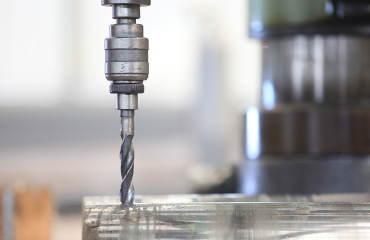YB Piston Pump
- Core parameters
- Flow Rate: 3-36 m³/h
- Pressure: 0-2.5 MPa
Product Introduction
YB piston pump is also called hydraulic ceramic plunger mud pump, which adopts hydraulic drive. In addition, its plunger is made up of alumina ceramic which has good wear-proof and chemical erode resistant property. We have multiple series for you to choose, such as YB85, YB120, YB140, YB200, YB250 and YB300.
It includes high-pressure pump, low-pressure pump with large flow rate and variable pump. Among them, high-pressure pump is suitable for long distance slurry transmission or transmission to higher altitude. Low-pressure pump with large flow rate is suitable for steadily transmitting large amounts of slurry. Variable pump can be used as matched pump for various filter presses. In addition, it can automatically adjust pressure and flow rate according to mud density.
Product Features
1. Hydraulic drive, double cylinderdoubleacting pumps, large flow rate;
2. Steady operation, contimuous work, high reliability;
3. Low noise, wide voltage regulating range, smallfeedliquidpressure fluctuation;
4. High wear resistance, acid corrosion resistance.
Application
You can use it for conveying slurry, coal water slurry, suspension of kaolin and non-metallic minerals, liquid food, electronic paste, magnetic materials and so on. In addition, it can convey dense suspension whose solid content is more than 70%. Therefore, it can be used with spray drying tower, filter presses and other drying equipment.
Parameters
|
Model |
Rated Flow m³/h |
Pressure Range MPa |
Rated Pressure MPa |
Frequency of Stroke r/min |
Motor Power Kw |
mm Diameter of Slurry Pump |
Total Weight (Kg) |
Boundary Dimension Length*Width*Height (mm) |
|||
|
G |
D |
G |
D |
V |
|||||||
|
YB85 |
3 |
0-2.5 |
2.5 |
2.0 |
15 |
4 |
Φ57(Φ48) |
420 |
1215x 850x 1500 |
||
|
YB120 |
7.1 |
0-2.5 |
2.5 |
2.0 |
24 |
11 |
Φ89(Φ76) |
850 |
1580x 1000x 1600 |
||
|
YB140 |
10 |
0-2.5 |
2.5 |
2.0 |
26 |
15 |
11 |
15 |
Φ89(Φ76) |
900 |
1580x 1000x 1600 |
|
YB200 |
19 |
0-2.5 |
3.0 |
2.5 |
22 |
18.5 |
15 |
15 |
Φ108(Φ89) |
1200 |
1690x 1230x 1900 |
|
YB250 |
30 |
0-2.5 |
2.5 |
2.0 |
18 |
22 |
18.5 |
|
Φ108(Φ108) |
1400 |
1950x 1300 x 2200 |
|
YB300 |
36 |
0-2.5 |
3.0 |
2.5 |
15 |
30 |
Φ140(Φ114) |
1600 |
2050x 1600x2100 |
||
OPTIONALS OF THE CUSTOMER'S CHOICE
Cake Dryer
The Cake Dryer is a 100% automatic system for the drying of the cakes of mud through the use of compressed air. The system is similar to the Core Blow; the jet of compressed air is blown into the central hole of supply of the plates, thus allowing a drying of block 20 plates, to have a final cake completely dry.
Watch the videoCake Washing
Cake Washing is a closed-loop system for special slurries containing chemicals. It is usually used in conjunction with membrane plates, allowing clean water to flow into the plate chambers before the bricks are discharged. This process rinses the bricks, lowering the level of chemicals below the threshold that would make them ‘special sludge’ with the associated disposal costs.
Watch the videoCore Blow
Cake Washing is a closed-loop system for special slurries containing chemicals. It is usually used in conjunction with membrane plates, allowing clean water to flow into the plate chambers before the bricks are discharged. This process rinses the bricks, lowering the level of chemicals below the threshold that would make them ‘special sludge’ with the associated disposal costs.
Watch the videoDrip Tray
The Drip Tray system consists of one or two staggered trays that occupy the part underneath the filter press during the filtration phase and collect the water droplets that escape. Once the filtration phase is over, the trays are then moved by a motor to allow the removal of the cake. This system is designed to prevent some of the water droplets escaping from the cloths from falling on the already discharged mud bricks.
Watch the videoReal Washing
The filter press can be equipped with an automatic plate and cloth washing system. The Real Washing system consists of a valve and piping system on the feed side of the filter press and vent valves on each plate. The feed pump sends clean water to wash out the residual sludge. The system washes the plates 20 at a time. The frequency of the washing cycle is set on the control panel.
Watch the videoRobo Wash
The Robo Wash is a fully automated canvas washing system that can be put into operation at the push of a button. The high-pressure sprayer, located at the end of a sliding curtain, runs between each plate and dispenses high-pressure washing water over the entire surface of the canvas, dislodging and removing any build-up of dirt on the canvas.
Watch the videoSqueezing Membrane
The Squeezing Membrane system allows better mechanical pressing of the sludge cake. Basically, the membrane is inflated with water and grows in volume by squeezing the sludge that is pumped into the chamber. A variable volume is the main difference to standard plates. The special plate, together with the drainage system, guarantees a drier end product and a more efficient filtration cycle. The draining of the cake also benefits. The material of the membrane can be varied by using different technopolymers depending on the customer’s needs and the material to be processed; they are usually made of polypropylene.
Watch the videoTilt Sensor
The Tilt Sensor system consists of upper and lower proximity sensors that control the tilt of the last closing plate. In the software that manages the filter press, the delay time between the two sensors can be set. If the second sensor is activated within the set time after the first, the machine can continue its cycle normally. If not, an alarm will be triggered.
Watch the videoTorbidity Sensor
The Torbidity Sensor is placed in the clear water storage tank and consists of a candle gauge (sensor) immersed in water with dissolved particles. Based on the feedback from the sensor, it is possible to determine where to direct the water flow. Using predefined values, if an excessively high turbidity level is detected, the system activates the valves and diverts the water flow from the fresh water tank to the wastewater collection tank, in order to put the water through the clarification phase again.
Watch the video
BBNEP Raw Material Analysis Laboratory
Technique leads advance and innovation drives development

Targeted research on 12 industries
Achieving sewage discharge standard and realizing recycling








